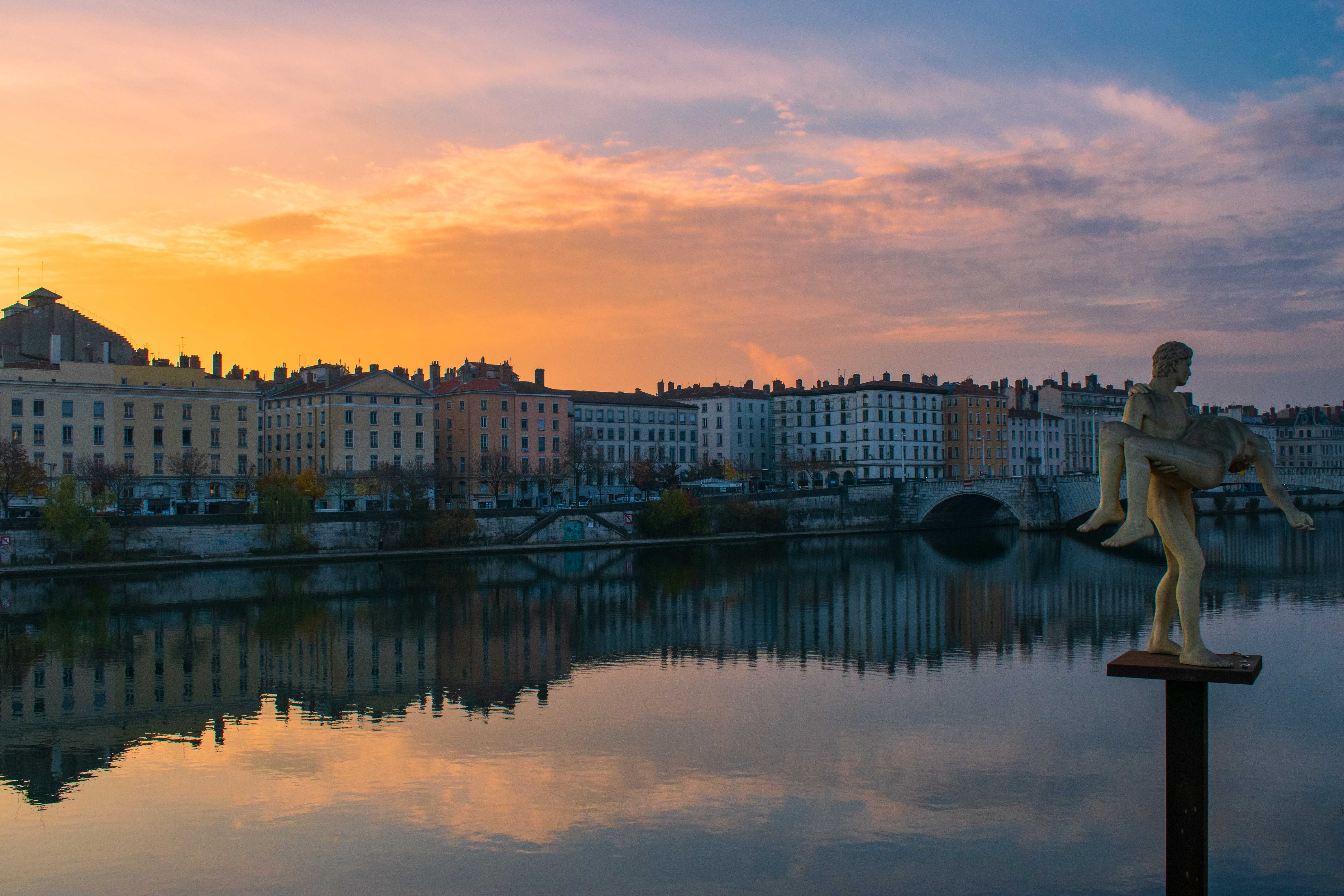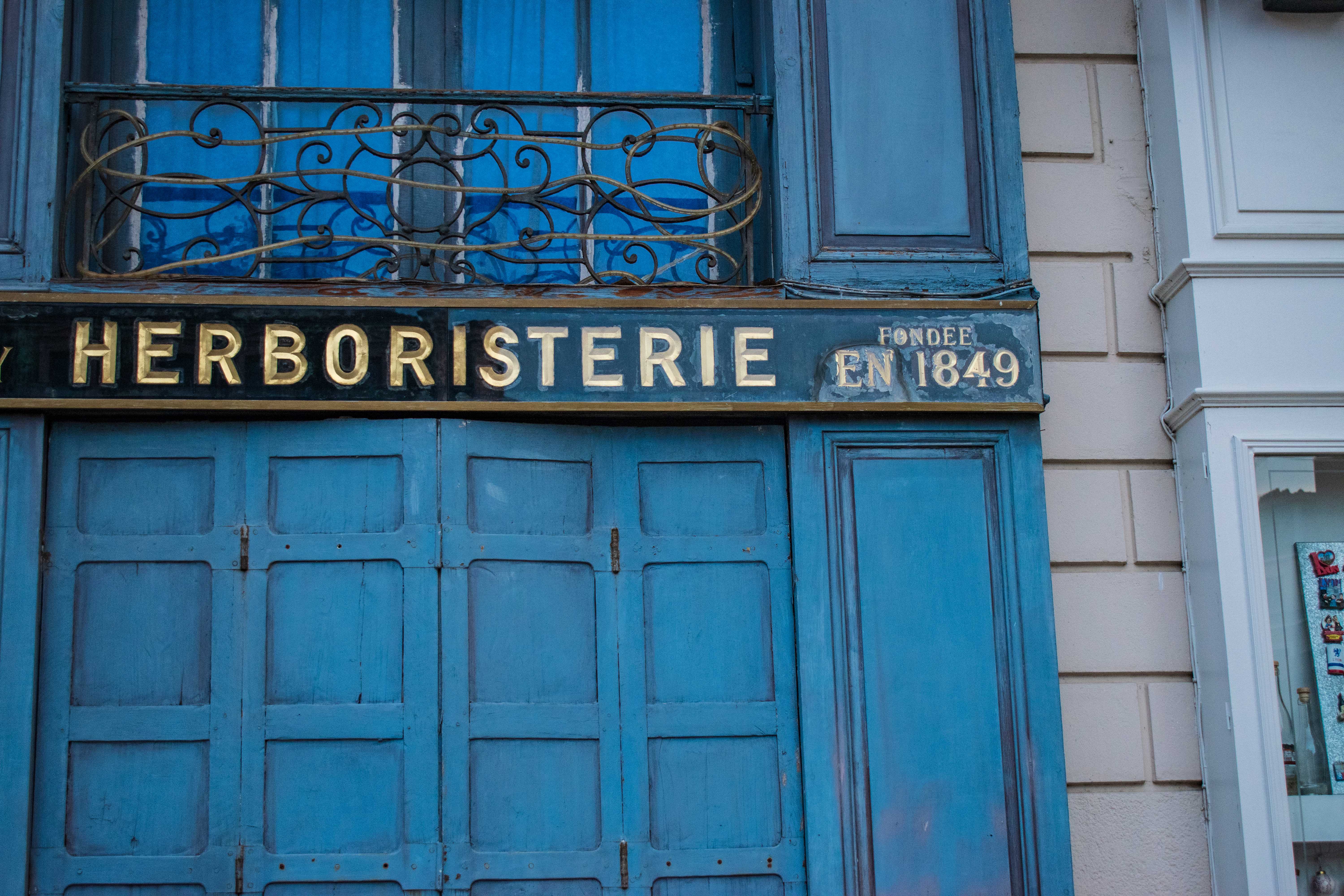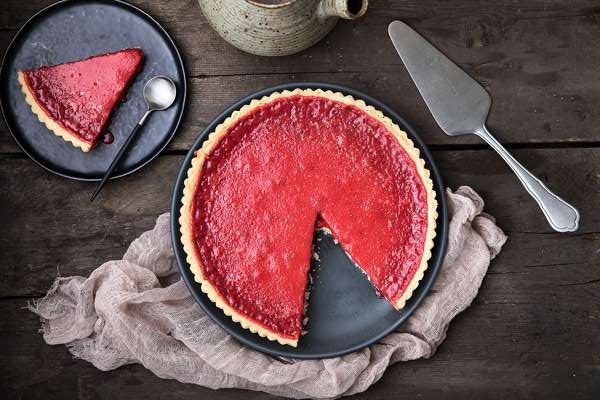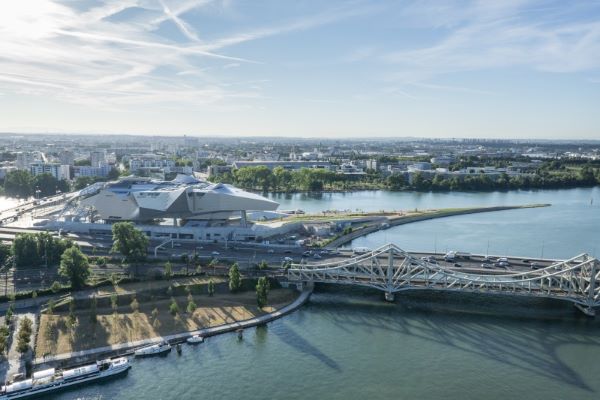Lyon city guide: Where to eat, drink, shop and stay in France’s gastronomic capital
It’s foodie, fun and furnished with surprising public art – so why isn’t France’s stylish eastern city more famous? Anna Richards digs into its chef-loved gourmet scene


Two rivers, a vast Baroque cathedral and no fewer than 20 Michelin-starred restaurants – Lyon does nothing by halves. Long overlooked by tourists heading for Paris or Bordeaux, and more famous in the 20th century for its industrial crush than its holiday-friendly charms, the city’s former factories now hum with life, hosting galleries, museums and nightclubs.
Street art sits alongside Gothic gargoyles, Roman-era amphitheatres next to glass buildings that resemble giant Rubik’s Cubes and France’s largest urban park is perked up by resident giraffes. Lyon’s ever-surprising wanders give a nod to Parisian-esque chic, but with the post-industrial edge and grittiness of Berlin.
What to do
Admire the art
Trick and treat your eyes with optical illusions, spray-can creations, public sculptures and contemporary galleries – this is one of France’s great art cities. With over 100 giant murals by local artist group CitéCréation, the city is like an enormous, free gallery. The most famous frescoes are the trompe l’œil – optical illusions designed to trick the eye into thinking they’re real streets, whilst depicting scenes from Lyonnais history.
Begin your tour at the summit of higgledy-piggledy Croix-Rousse, Lyon’s former silk-weaving district, at the Mur des Canuts (Wall of Silk Weavers), the city’s largest trompe l’œil. From here, descend via knee-busting, gaudily painted stairs to Place des Terreaux and the Opéra Nouvel, to admire 19th-century Fontaine Bartholdi. Entirely built from lead, the fountain is in the shape of a woman (symbolising France) driving a four-horse chariot to represent the country’s four great rivers.
Keep a look out for disembodied limbs diving through walls on your way. These floating legs are an installation called droit dans le mur (straight into a wall) by Lyon’s very own Banksy, an incognito artist known only as ‘CAJ’. Join the River Saône at trompe l’œil La Fresque des Lyonnais, then continue upstream following the Rives de Saône exhibition, where installations by international artists stretch for 15km along the river. To finish, head to the suburbs at Saint-Romain-au-Mont-d’Or to visit La Demeure du Chaos (Abode of Chaos), a collection of contemporary art inspired by activism (free entry, only open on weekend afternoons and public holidays).
It’s worth forking out a few euros to visit Musée des Confluences, a grand design natural history museum and contemporary art gallery at the convergence of the two rivers (open daily from 10.30am-6.30pm, €9 (£7.50)).

Be a flâneur
France’s word for being an aimless wanderer and pursuer of pleasure is particularly apt here. Lyon is home to France’s largest urban park, Parc de la Tête d’Or, complete with giraffes and flamingos (free). Next visit Jardin Rosa Mir, an urban shell grotto in Croix-Rousse (currently only open as part of Lyon’s Nature Tour, €6). From here, cross the river to flâne the cobbled streets of the old town, Vieux Lyon, admiring the traboules (covered stone passageways originally used for transporting silk). Zigzag uphill through Jardin du Rosaire (or take the funicular and descend on foot, it’s a steep climb) to explore the prim, white Notre-Dame de Fourvière (free, donations encouraged). Judge this majestic cathedral by its cover: the inside is equally opulent. Don’t miss the Roman amphitheatre and Unesco heritage site Théâtre Antique de Lyon en route (free, open daily, museum €7, closed on Mondays).
Where to stay
Hotel Vaubecour has elegant, characterful rooms and is just a stone’s throw from the Saône in Presqu’île, the heart of Lyon. Doubles from €72, room only, in low season.
For privacy and flexibility, MiHotel has chic suites across the city with contactless check-in (from €119, room only). Stay at Suite Confidence to be close to Bellecour, for the best transport links and to access many of the city sights on foot.
For budget travellers, Ho36 Hostel in La Guillotière has a young vibe and a wealth of bars and cafés on its doorstep. Beds in a shared dormitory start from €22 a night, while chic double rooms are from €69, room only.

Where to eat
Elsewhere in France a bouchon means either a traffic jam or a bottle stopper. In Lyon, it’s a small, traditional restaurant, which serves rustic cuisine, principally offal. For meat-eaters, the finest pig trotters and best atmosphere are served at Notre Maison. Lyon’s culinary scene has diversified hugely in recent years and veggies and vegans are spoilt for choice, too. For picture-perfect plant-based plates, head to Les Mauvaises Herbes.
No visit would be complete without a fine dining experience at Paul Bocuse, but if the price tag has you crying into your Côtes du Rhône, head to Les Halles de Lyon Paul Bocuse instead – a more affordable, informal sibling tucked into the city’s enormous covered market, serving every speciality from frogs’ legs to pink praline tarts.
From Friday to Sunday, stock up on platters of oysters or oozing wheels of arôme de Lyon, (a creamy cow’s cheese covered in dried grape skins) at the Marché alimentaire Saint-Antoine/Célestins market (6am to 1.30pm). Here you can enjoy your feast al fresco on the riverbank.
Too much choice? Take a food tour with the No Diet Club (€49) for the best selection of Lyonnais specialities.
Where to drink
As Lyon is the home of Antoine de Saint-Exupéry (author of The Little Prince), it’s fitting to start a day combining caffeine and literature at one of the city’s bookshop cafés. Two of the best are Un Petit Noir (French books) and Damn Fine Bookstore (English/foreign language).
France may be a nation of wine drinkers, but this region – the Auvergne-Rhône-Alpes – has the most breweries per region, around 350 in total. Learn to brew your own beer at La Beer Fabrique (€160) before having a sundowner at floating watering hole Le Sirius, one of many peniches (boat bars) lining the Rhône.
On dry land, try Hop Store or Mos Pub for craft beers, or La Salamandre for wine and aperitifs. On warm evenings, make like the locals and just buy a bottle of wine to enjoy on the banks of the Rhône.
To dance the night away, head to Le Sucre, an industrial-chic club on the roof of a former sugar factory. Intimate speakeasy Le Bec de Jazz hosts live music and is open Monday to Saturday from 10.30pm to 5am. It’s always packed and raucous, you’ll hear it before you see it.
In the summer, open-air concerts take place at Notre-Dame de Fourvière and the Théâtre Antique.

Where to shop
For a slice of Lyonnais history, head to the boutique at Maison des Canuts for embroidered silk scarves. Attend a talk on Lyon’s silk-weaving history and demonstration of the Jacquard weaving looms before you shop (Tuesday-Saturday, one hour, €8). Give both your wardrobe and fridge a glow up with designer clothing and gourmet gifts at the covered market, Les Halles Grand Hôtel-Dieu.
Croix-Rousse’s friperie (thrift) shops are filled with treasures, and The BrickLane has a particularly eclectic selection of vintage clothing, plus a café/bar for refreshments whilst you trawl.
Meanwhile, Les Puces du Canal flea market (Sundays, 7am to 1pm) at Villeurbanne is well worth the short hop from the city centre – about 20 minutes on public transport – for al fresco bistros, antiques and bric-a-brac. Villeurbanne itself has just been named the French capital of culture.
Architectural highlight
There’s been a church on the site of Cathédrale Sainte-Jean-Baptiste in Vieux Lyon ever since the 6th century, but the ornately carved cathedral there today was completed in 1476. Look out for various bug-eyed gargoyles watching from the eaves (free entry).

Nuts and bolts
What currency do I need?
Euros.
What language do they speak?
French.
Should I tip?
It’s not customary, but always appreciated.
How should I get around?
The Lyonnais love to cycle and there are 350 Vélo’v stations in Lyon, as well as well-marked, largely flat cycle lanes. The metro and trams are frequent, efficient and inexpensive (a single fare costs €1.90, or buy a carnet of 10 tickets for €16.90, with ticket machines at every tram/metro station). Presqu’île and much of the city centre are easy to explore on foot, pick up a map from the Only Lyon Tourism Office on Place Bellecour.
What’s the best view?
Undoubtedly from the roof of Fourvière Basilica, the highest point in the city, which can be accessed on a walking tour (€10, pre-booking recommended, check the website for dates/times which change frequently).
Insider tip?
Visit for one of Lyon’s many festivals. La Fête des Lumières (Festival of Lights) in early December, is spectacular, although accommodation is at a premium and the city inundated with tourists.
Getting there
Trying to fly less?
Good news, you don’t need to. From London, the Eurostar takes just over two hours to Paris Gare du Nord. Take the metro for two stops to Gare de Lyon, from where the TGV (high speed train) takes under two hours to Lyon Part Dieu or Perrache. All told, the journey takes under five hours from central London.
Fine with flying?
Lyon-Saint Exupéry has direct flights from several UK airports, including London, Edinburgh and Bristol (seasonal).
Join our commenting forum
Join thought-provoking conversations, follow other Independent readers and see their replies
Comments
Bookmark popover
Removed from bookmarks